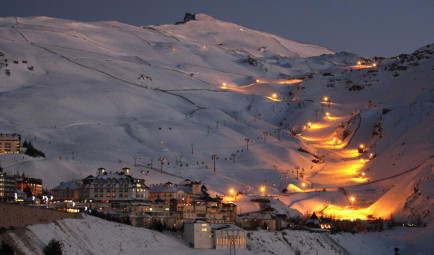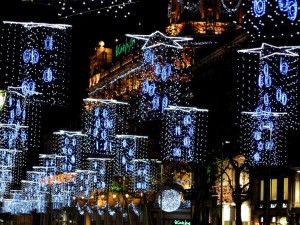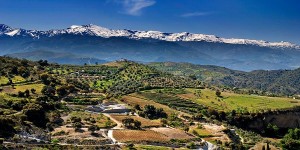
Spain’s mountainous peaks see snow every winter, meaning you can enjoy a very different slice of Spain.
It took a while to get here – especially during a sweltering October and an unseasonably mild and dry November – but, with the onset of December, winter has truly arrived in Spain.
Unlike most of its European neighbours, Spaniards do not have to suffer through endless grey skies, sub-zero temperatures and a depressing lack of daylight. Instead, the winter season in Spain is a curious time of year, where many of the nation’s more peculiar idiosyncrasies come to the fore.
So if you want to enjoy Spain’s brief but unique winter, here are four easy steps to take to blend in…
- Dress according to the calendar, not the weather

Down on the Costa del Sol, the depths of winter can still usher in the curious sight – to Spaniards at least – of Brits and northern Europeans braving the beaches and even dipping a blue toe into the Mediterreanean. You can’t really blame them: 16ºC and sunny is way better than the climate they’ve escaped from, and isn’t too far off a normal summer’s day in the UK.
But regardless of how mild or bright it actually is outside, Spaniards will dress throughout winter as though they are preparing for a particularly stylish ski trip. Scarves, gloves, fur coats, sturdy boots, woolen socks: all de rigeur in December, allied to the obligatory sunglasses (it’s still sunny most days, after all), and a seat at one’s favourite seafood restaurant. Outside, of course.
- Chow down on churros

Most of Spain’s culinary output is famous the world over for its light touch and freshness. After all, with such a warm climate to enjoy, it makes sense for Spanish food to be free from stodge.
But there are a few winter warmers that the Spanish specialise in, particularly in the north where winters actually are pretty wet and wild. Churros, however, are enjoyed across the country in winter. These long, thin, sugared treats – which taste pretty much like donuts – are ideal for dunking in a steaming mug of hot chocolate to give you a tummy-hugging sugar rush on a chilly morning.
- Shop, rest, shop, rest

Spain’s Christmas assault is more of a gentle series of polite taps on the shoulder rather than the four-week-long festival of consumerism that hits the UK like a tinseled tsunami at the end of November each year.
Spain spreads out the joy a little, with the Navidad season officially beginning on December 6 with Constitution Day and December 8 with the Feast of the Immaculate Conception, before easing gently into Christmas Eve and Christmas Day, before rounding off the bulk of the gift-giving on January 6th for Three Kings Day. In between these holidays Spaniards seek to rest and see as much of their family as possible.
- See a different side of Spain

The cooler winter months are perfect for exploring parts of the country that can be overlooked during the warmer periods of the year. With the coastline largely too brisk and blustery to really enjoy, why not head inland to sample some of the stunning little whitewashed villages that are dotted across Spain’s interior?
Spain is very mountainous, which means that most of its higher peaks are also dusted with snow in winter, providing a very different backdrop to what you might be used to. Indeed, you can even head to the world-class ski resorts of Sierra Nevada to enjoy a touch of Alpine-style leisure just two hours’ drive from the Costa del Sol.
 en
en



 Vlaams-Nederlands
Vlaams-Nederlands
0 Comments
Leave a Comment
DISCLAIMER
The opinions and comments expressed by contributors to this Blog are theirs alone and do not necessarily reflect the views of VIVA Homes Under the Sun Ltd, any of its associated companies, or employees; nor is VIVA to be held responsible or accountable for the accuracy of any of the information supplied.
Have you got something to say?